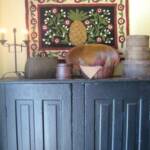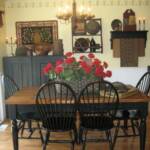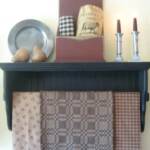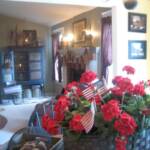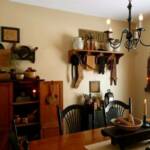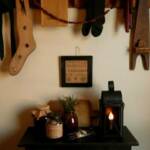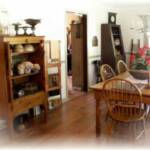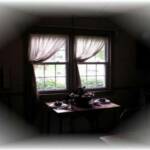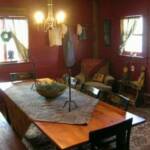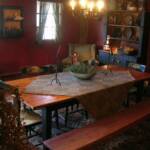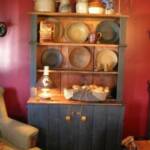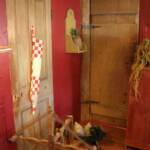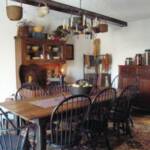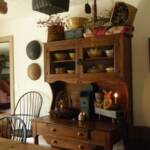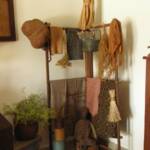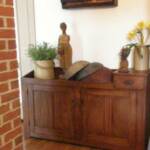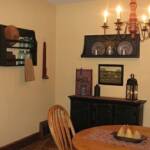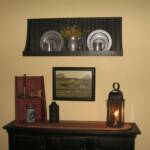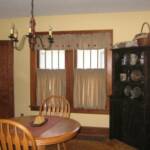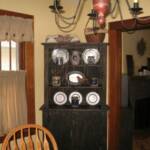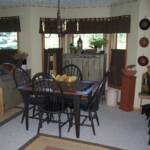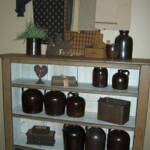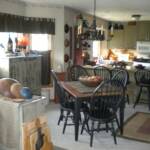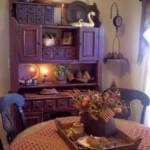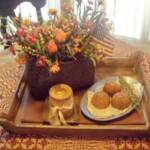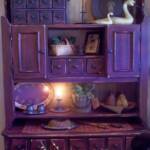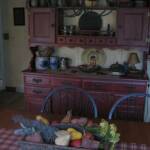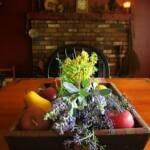A Primitive Place
www.aprimitiveplace.org
Email: info@aprimitiveplace.org
Primitive & Colonial Inspired Homes
Primitive & Colonial Inspired Dining Rooms
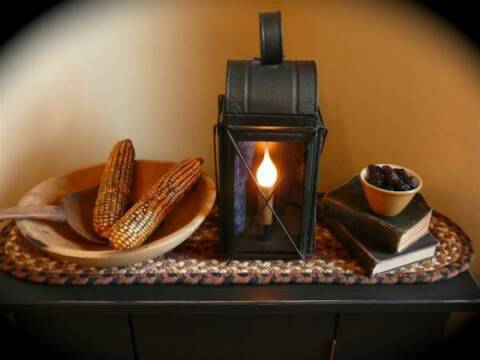
Submitted by HomeOnTheHill 2008
Submitted by blacksheeplisa 2008
Things you may have found in colonial times:
Simple folk art paintings; samplers of needlework; shelves holding pewter, redware and salt glazed pottery.
Redware Pottery was heavily used from the 17th through the 19th centuries by housewives. It is made of clay that doesn’t need to be fired at quite so high a temperature as salt glaze pottery.
Lighting in Colonial America came in the form of lanterns, candles and oil lamps. The wealthy would have used chandeliers, but most homes made do with wood or iron candle holders, sometimes mounted on the wall, but most often just placed on a table or dresser.
Decorating tip:
Keep your accessories to a minimum, but changing them seasonally to enjoy each piece your have. Change your collections out to enjoy them more and let the collection shine!
Farmhouse tables are typically referred to as farm or harvest tables. Throughout history farming families were known to be large in size so much room was needed. The farmhouse table was also known for having drawers or other type of storage located in the ends of the table to allow room to store utensils or placemats. The farmhouse table, unlike the standard round table, had two heads of table.
Submitted by primchick 2009
Early colonial home decorating often meant having to deal with rooms with low ceilings and ones that lacked light. To help the room appear brighter, the walls and ceilings were painted white. Stencils were used to imitate borders, which were for the wealthier.
The grander colonial homes had painted lining papered walls, often with borders and garlands.These usually were in the form of natural motifs of fruit and flowers.
Furniture was sparse in early american homes, so it was moved around a lot.
This page was last updated: December 21, 2009
Submitted by primlover63 2009
Click on thumbnails to enlarge photos
Decorating tip: Finish off your primitive room with early colonial accessories such as, crocks, samplers, folk art, baskets, redware, salt glazed pottery pieces and colonial toys.
Submitted by Behind My Red Door 2009
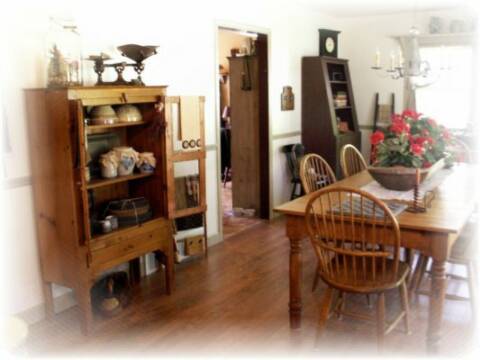
Submitted by KM Primitives 2009
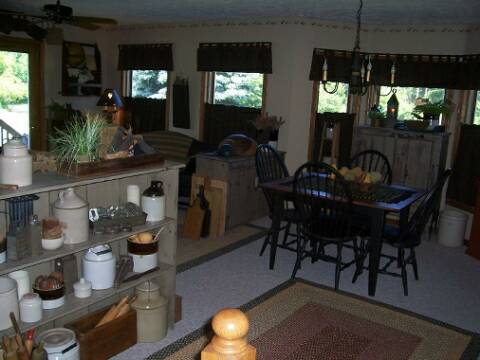
Submitted by A Primitive Pond Homestead 2009
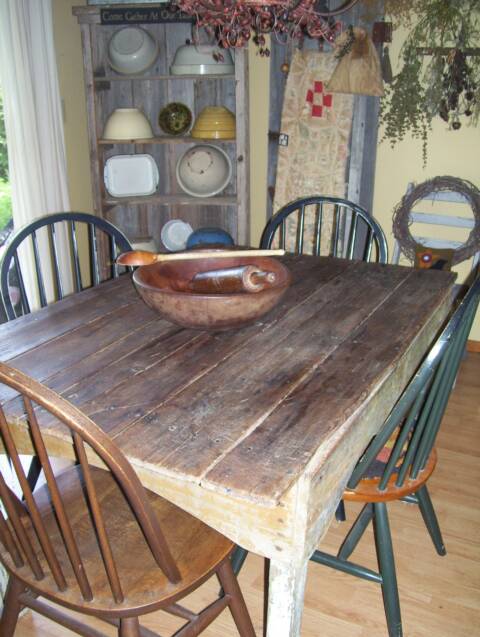
Submitted by primitivelover 2009
Submitted by The Patriot Homeplace 2009
Submitted by Fine Country Living Primitives 2009
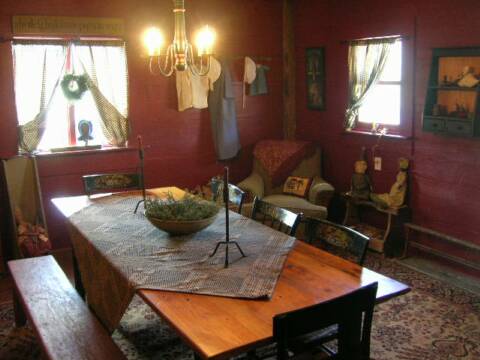
Submitted by primkarlee 2009
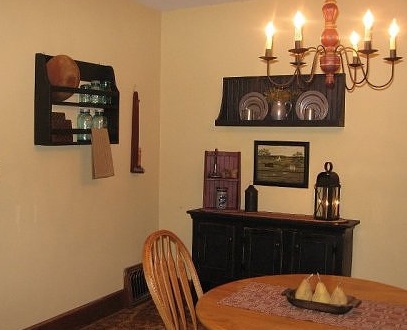
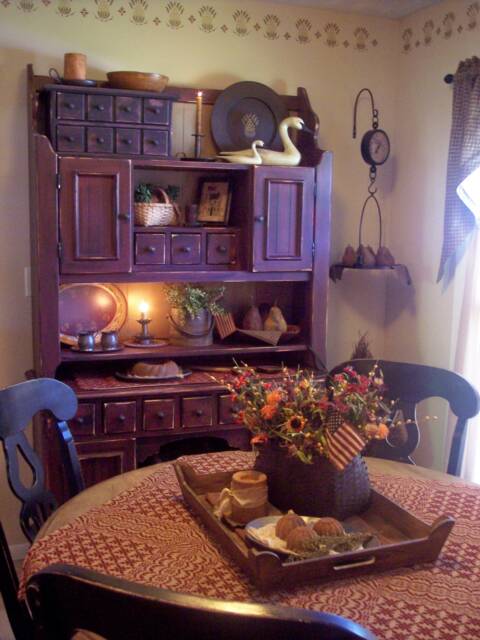
Submitted by CozyCoop 2009
Click on thumbnail to enlarge photos
Submitted by HomeOnTheHill 2008
It tends to be porous and can’t hold liquid for long periods of time. You can bake in it, because it is porous it heats evenly, baking beautifully. If you have Redware you should check the product’s directions for use.
Submitted by Behind My Red Door 2009
Click on thumbnail to enlarge photos
Click on thumbnail to enlarge photos
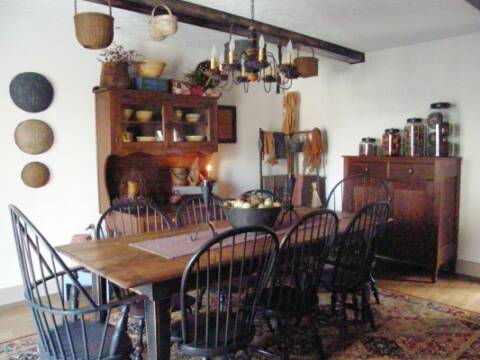
Dining room chairs were often pushed back after supper to make room for the next activity. Chair rails were invented to protect the painted walls. A strip of chair rail was nailed to the wall and painted the color of the doors, trim and moulding.
Click on thumbnails to enlarge photos
Click on thumbnails to enlarge photos

Submitted by prims4me 2009
